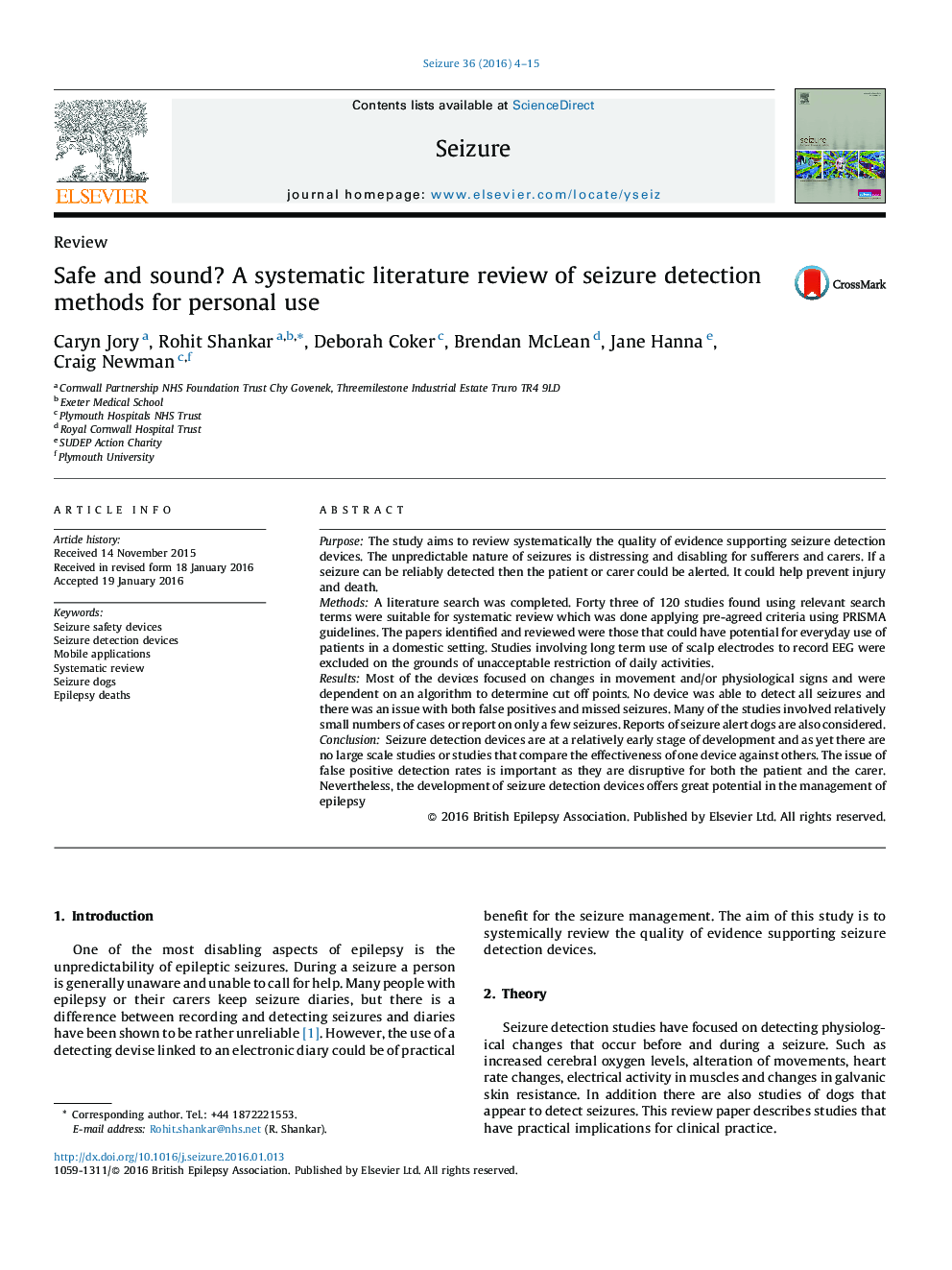| Article ID | Journal | Published Year | Pages | File Type |
|---|---|---|---|---|
| 340470 | Seizure | 2016 | 12 Pages |
•Seizure detection devices are at a relatively early stage of development.•No large scale comparative study has yet been conducted.•There is no evidence that any seizure detection device can prevent SUDEP.•Self-empowerment of risk assessment using evidenced tools is critical for vigilance.•Evidence led mobile phone apps offering cheap practical self-monitoring is promising.
PurposeThe study aims to review systematically the quality of evidence supporting seizure detection devices. The unpredictable nature of seizures is distressing and disabling for sufferers and carers. If a seizure can be reliably detected then the patient or carer could be alerted. It could help prevent injury and death.MethodsA literature search was completed. Forty three of 120 studies found using relevant search terms were suitable for systematic review which was done applying pre-agreed criteria using PRISMA guidelines. The papers identified and reviewed were those that could have potential for everyday use of patients in a domestic setting. Studies involving long term use of scalp electrodes to record EEG were excluded on the grounds of unacceptable restriction of daily activities.ResultsMost of the devices focused on changes in movement and/or physiological signs and were dependent on an algorithm to determine cut off points. No device was able to detect all seizures and there was an issue with both false positives and missed seizures. Many of the studies involved relatively small numbers of cases or report on only a few seizures. Reports of seizure alert dogs are also considered.ConclusionSeizure detection devices are at a relatively early stage of development and as yet there are no large scale studies or studies that compare the effectiveness of one device against others. The issue of false positive detection rates is important as they are disruptive for both the patient and the carer. Nevertheless, the development of seizure detection devices offers great potential in the management of epilepsy
